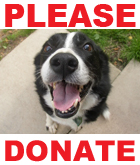
Border Collie Rescue - On Line - BCR Rehab Centres

Border Collie Rescue Rehabilitation Centre Project
This page is part of our appeal to raise funds to set up a centre for the assessment and rehabilitation of Border Collies along the lines of the one we used to run on a rented smallholding near York.To make this happen we will need to raise in excess of Five hundred thousand pounds to enable the adaptation of a property we have recently purchased near Dumfries, Scotland.
The property has a range of outbuildings around a central yard which we wish to convert into office, dogs kitchen, grooming room, first aid and recovery room, accommodation for up to 12 dogs, 2 x 2 bedroom flats and a small visitors centre for school groups with 3 rooms, kitchen and toilet block.
There is a large 10 acre field to be divided into two grazing fields and three smaller paddocks for training and exercising dogs. The perimeter and a small section will be planted with trees and shrubs to provide additional training facilities.
In addition to this another 1.5 acres of amenity land and the farmyard are to be adapted for demonstrations and the education of visitors.
The house adjacent to the property has also been purchased by two trustees and is currently providing accommodation for visitors, volunteers and dogs with an office, visitors reception room and WC.
The property is set 1/2 mile up a private track from a single track road with no near neighbours. It is ring-fenced and located in a remote rural setting.
All funds donated towards the centre appeal will be kept in a restricted fund in a deposit account held by the charity.
The restrictions of this fund is that it can only be spent on the purchase and development of a property or properties for the purposes of accommodating, assessing, rehabilitating and retraining of dogs with behavioural difficulties or traumas that can not be housed in foster homes.
It will allow us to take in and save dogs we cannot accommodate under our current foster home system.
Donations towards this fund can be made through most of the usual channels available to make donations to Border Collie Rescue, single 'one off' donations, legacy, sponsorship, etc. other than that of regular standing order donations which would be difficult to separate from our income flow.
Donors will need to make us aware of the purpose of their donation so we can transfer the appropriate amount into the restricted deposit account. Online donations through the project page with CAF will automatically be credited to the correct account.
Online donations can be made using credit or debit cards or via PayPal to a fundraising page hosted by the Charities Aid Foundation by clicking on the 'Please Donate' button at the top of the page, or:-
If you want to donate now you can start the process here -

Below we explain the advantages we would gain by running our new centre and then outline the facilities we had at the rented York centre in order to give a perspective on what we wish to achieve.
So, please read on :-
Our foster homes are distributed around the UK.
Each is able to offer certain specialised skills in respect of helping dogs overcome traumas and guiding them along the path they demonstrate to us they should be travelling.
The limitations of this accommodations system is that these are peoples homes and these people have their own lives, children and dogs. The type of dog we can ask them to take in is restricted.
All our foster carers are volunteers and most are understandably reluctant to take in a dog with aggression problems or serious behavioral issues.
There is a risk to themselves, their family, their own dogs and their homes and a chance of prosecution if a dog they foster attacks someone.
The changes to the Dangerous Dogs Act now makes it an offence if a dog bites someone, or someone's animal, on its keepers property or private property, as well as a public place. There are many ways for dog keepers to fall foul of the law.
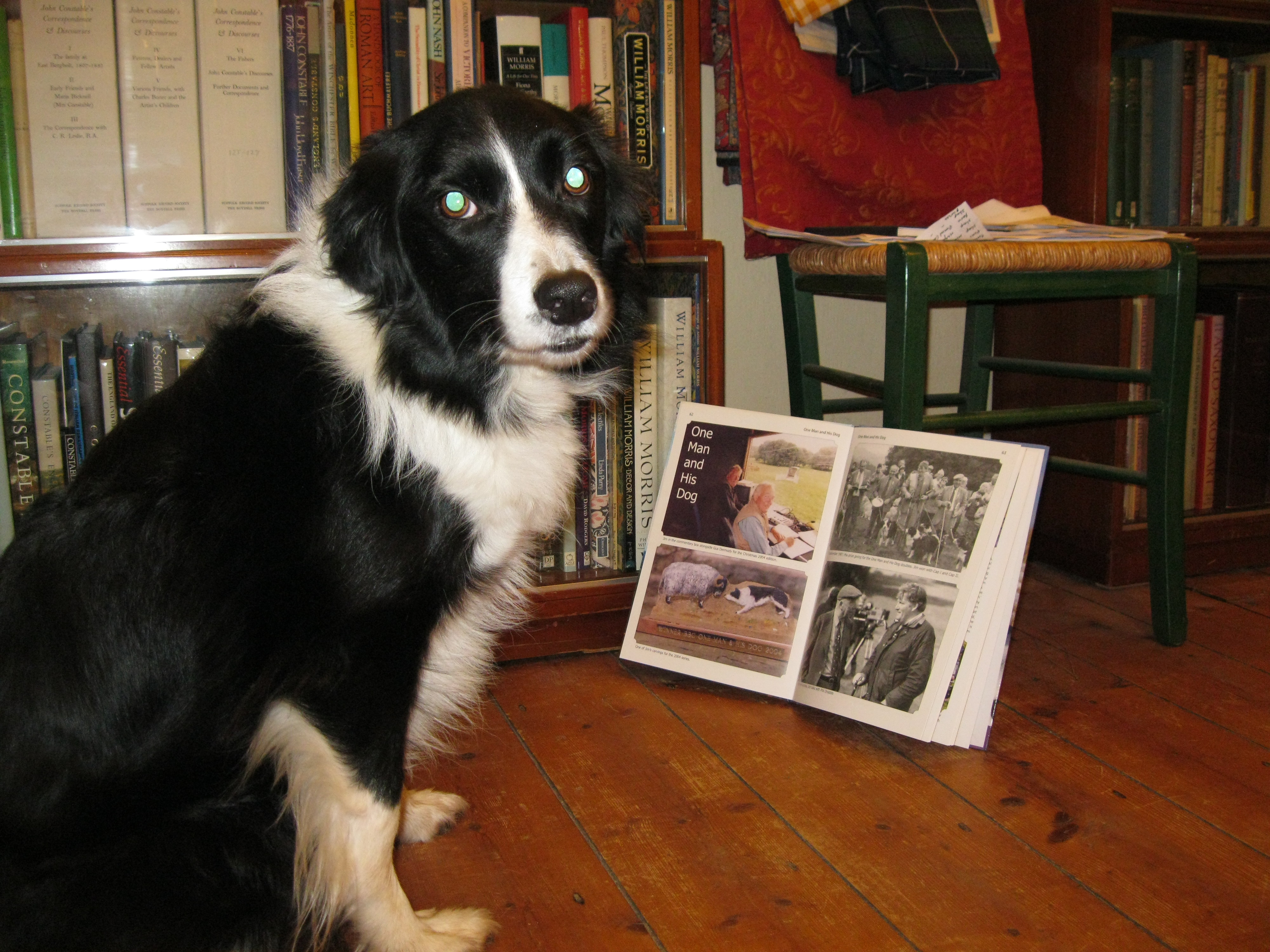
We can no longer get such insurance for dogs in transport. Insurers regard the risk too great to offer even the most basic of cover.
This tends to erode a foster carers incentive and increase their caution when asked to foster a dog.
So as it stands at the moment we have limitations on the nature of dogs we take in.
If a dog shows aggression of any sort we can't ask our fosterers to take it in.
If we did they most likely would refuse and we would probably lose one or two in the asking.
Currently, we have nowhere to accommodate such dogs.
Although many dogs we take in are enthusiastic and quick to learn and more than happy to please us in the way most Border Collies are, some are so traumatised by their experiences they can't help themselves.
Operating a centre would lift these restrictions, make everything logistically simpler and enable us to set up a facility to accommodate dogs we cannot take in now and handle them safely so we could rehabilitate them and re-home them.
A lot of lives would be saved.
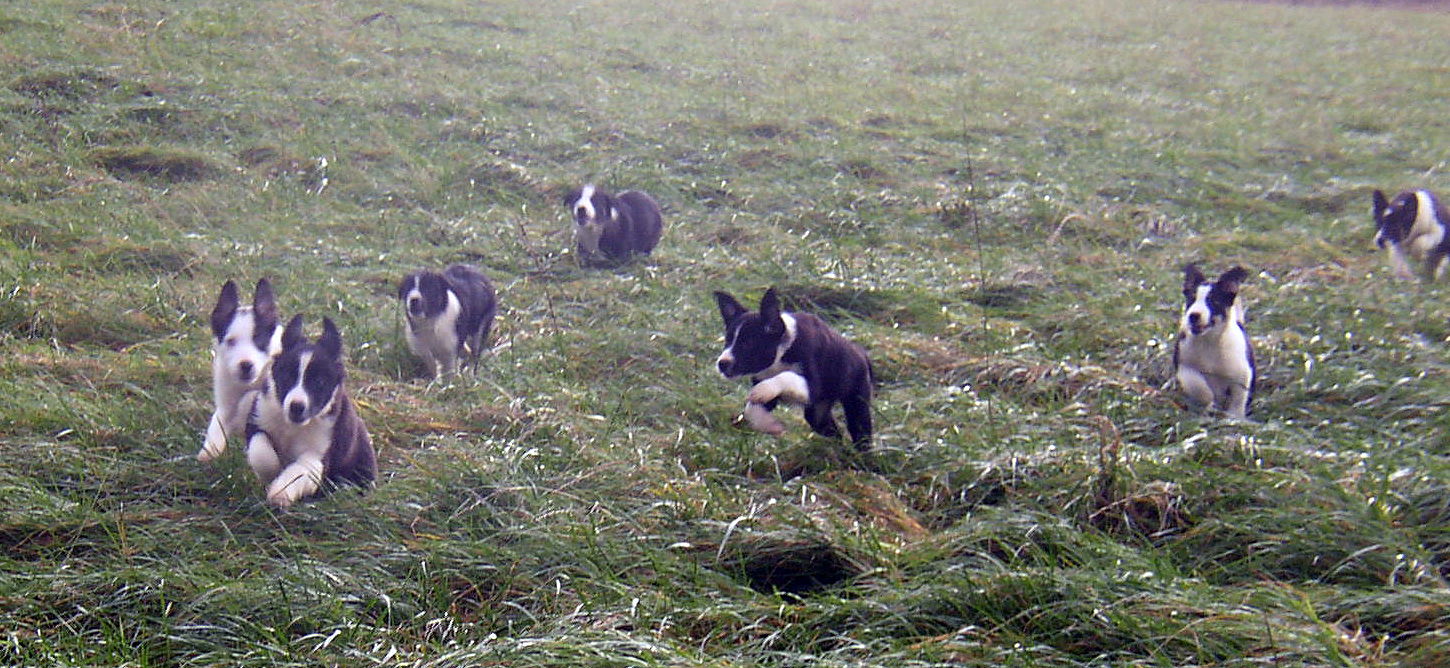
So how would we define what makes a centre?
Certainly not line block kennels or any other form of standard kenneling systems operated by many rescue organisations.Most Border Collies do not fare well in kennels. Many find the kennel experience traumatic which is why we use foster homes for our dogs.
Our job is to deal with their trauma, not exacerbate it and we have had lots of experience of the various ways dogs can be accommodated while waiting to be found new homes.
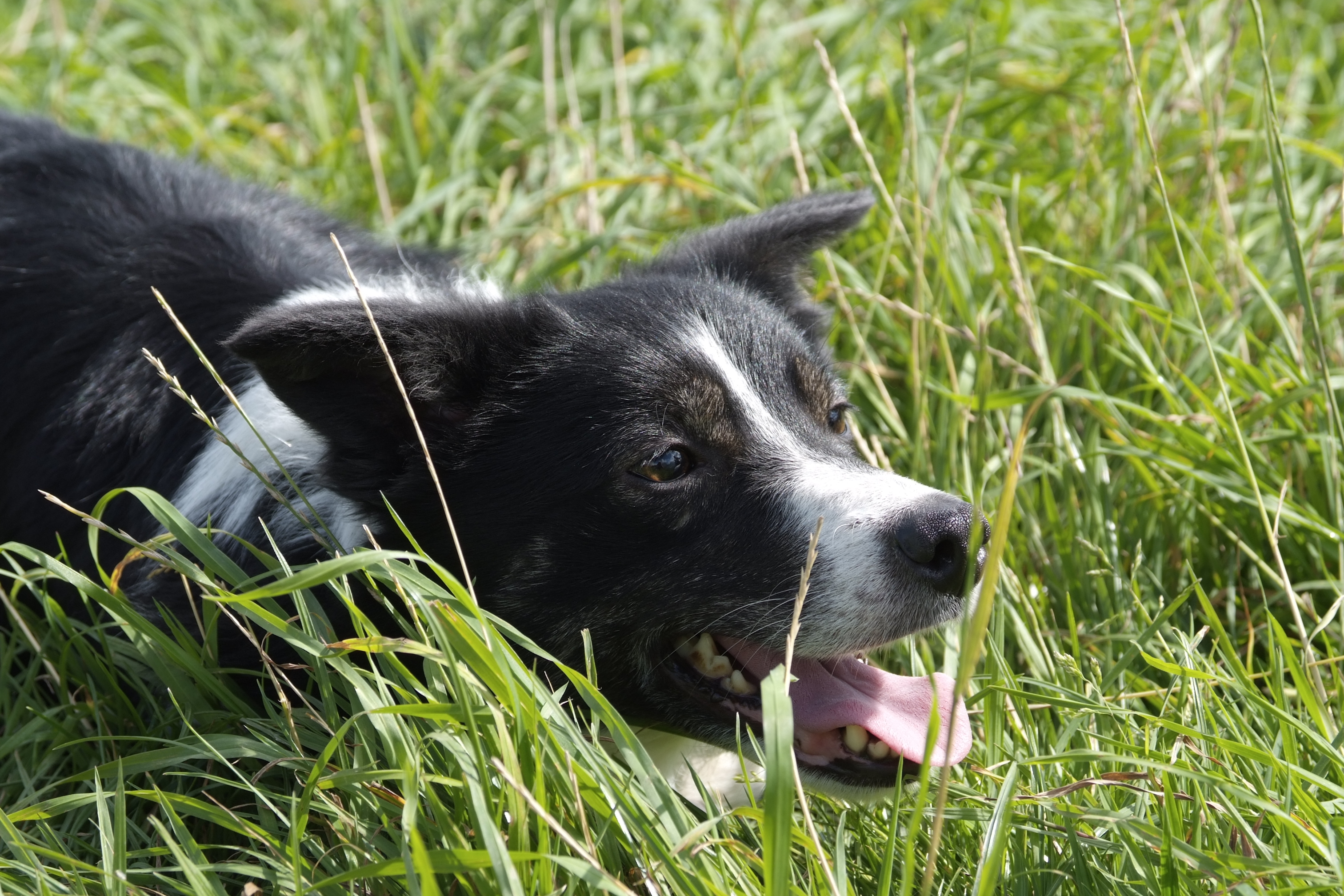
We would not want somewhere people can come and look at dogs in order to pick one that takes their fancy but we would need a facility where people could come and meet a dog we thought suitable for them.
We don't want people walking around staring at all the dogs.
Many dogs do not take well to being looked at by strangers. Staring can be seen as a challenge
Depending on their nature they can be frightened, upset and confused or become excited and confused.
It does not help with other dogs around them reacting in their own individual ways.
Noise induces adrenalin.
What we would seek is a quiet environment, one designed to allow dogs to relax.
Somewhere people can come to learn about dogs - not about dogs in a reactive state but dogs showing their true and individual characters.
We used to have a rehab and assessment centre near York.
A lot of thought went into this before it opened. We carried out a two year pilot scheme to make sure the approach was right.
A lot of dogs passed through. Some came in biting anyone in sight and left like little angels.
Some came in 'barking mad' and left like little angels. Most came in needing behavioral modification and/or training but left like little angels.
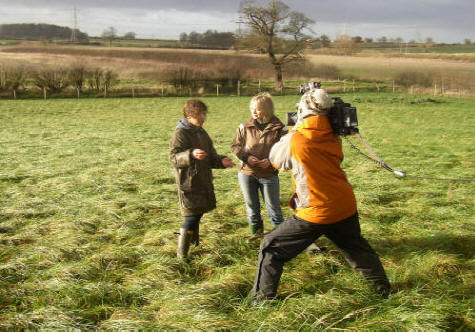
The biggest accolade we received was unintentional.
A film crew came to film us for a documentary. They attended the premises 3 times over 6 months and on the first occasion the lady presenter stood in our yard and asked what we had done with the dogs. We said 'nothing' they're all there'.
She said it was too quiet!
How would viewers believe they were filming at a dog rescue centre if there were not dogs barking in the background?
We apologised of course.

In most respects ideal, but rented. That was the drawback.
Landlord took the rent money but put little back and after 8 years, in spite of us spending some hard earned funds, the condition of the property had deteriorated to such an extend that we would have had to put in a lot more money to make it functional. This, it seems, is what he expected us to do but our lease said otherwise.

The work we were doing was benefiting a lot of dogs and a lot of people but as the facilities deteriorated it was becoming less effective.
Our funds are to care for dogs, not for the benefit of a private landlord so our choice was pretty straightforward. A no brainer, as they say.
We pulled out.
We could continue to operate the way we are now.
We used to work this way, for many years, before
we opened the centre but we need to be able to do more and help more dogs.
We need facilities like that again but we learn from the past. We won't rent again so we saved up to buy.
Can you help us raise the funds we need to develop our new centre?
The benefits for dogs would be incredible and any investment would be an investment in Border Collie Rescue.
If you want to help speed along this project use the "Back to Funding Our Work" button in the left menu and look at the options or read on and find out about the York centre and how it worked.
Looking back at the York centre. What we had and how we used it.

The environment was ideal for Border Collies to unwind, chill out and relax. Nearest neighbours around 1/4 mile away across the fields.
We had 10 acres of meadow land divided into three fields.
These surrounded the farmhouse on three sides.
One 6 acres, L shaped and used to hold a flock of around 50 Swaledale sheep for bringing on and training sheepdogs.
One of 2.5 acres for the initial assessment of all dogs coming through around sheep and one of approximately 1.5 acres used for daily exercise, various other sorts of assessment and play.

This fold yard provided an excellent, covered, all weather exercise and training area, approximately 100 foot by 100 foot with raised walkways on the South and West sides.
We converted the ranges around the yard.
One part to accommodate dogs coming in from working environments or staying at the centre short term for assessment around livestock.
A second part to provide a quarantine section, storage, a workshop, an isolation / whelping room, equipment room, veterinary examination room with medical store and separate post-operative recovery room.
There was also a grooming facility with shower and bath and a utility/ laundry room plus a dog kitchen attached to a bulk dry goods / food store with a double door to the outside right next to the main entrance gate to the facility.
Deliveries could unload at the front gate without having to disturb the dogs.

The largest reception room doubled as a 'dogs room' with occasional use for small seminars and more frequently as a classroom, while another hosted our library.
The final reception room was a staff and visitors lounge in the evenings and a private interview room during the day.
The original farm office was our duty office which also accommodated a number of dogs. It had a door directly opening into the yard so visitors to the office could enter and exit without disturbing any of the house dogs.
The kitchen, utility room and a couple of smaller storage rooms completed the ground floor.
One of these was a small room off the 'dogs room' and was useful for socialising dogs that had never live in a house.
Unsocialised dogs and dogs unused to domestic environments were accommodated in that room with a mesh panel in place in the doorway. The felt secure but were still able to see people and dogs in the main room and hear everything that was going on. Dogs like Shetland Tess, Nipper, Biting Ben and many others started their rehabilitation in that room.

Upstairs there were four good sized double bedrooms to accommodate staff and visitors.
Two of those were multi functional when not required for sleeping.
We made the best use of space that we could!
Outside, there was a large static caravan that could sleep up to 6 extra people attending seminars and we had our own generators to provide electricity in the case of any power cuts.
In addition to the facilities for accommodating and caring for the dogs, the outbuildings also held a workshop for general upkeep of the premises and various storerooms for equipment and stock.
Being out in the sticks we hedged our bets. Heating and cooking was by a mixture of fuels - LPG gas, electricity, oil and solid fuel.
The versatility of multiple forms of fuel was useful on many occasions when there was a power cut or we were snowed in for a few days.

Heat, in various forms, was available in all areas where dogs were accommodated overnight.
Dotted around the property, set well apart, were 4 outdoor runs with sleeping areas for daytime use.
These were placed in locations with a variety of outlooks where the view and the immediate area around them was beneficial to the occupant.
One unit was in the front garden where a timid dog could see other dogs coming and going but feel safe and secure and another behind the static caravan where the area was fenced off so any dog placed there would not be disturbed at all.
We had one set between the fields with a view over the 2.5 acre assessment area. A dog placed there could see other dogs being assessed around sheep.
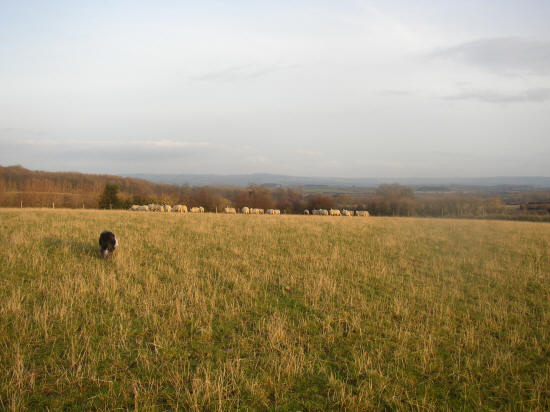
The fourth we called the 'far, far away' run.
It was down in the far corner of the 6 acre field and faced out over the surrounding countryside in its own little paddock to stop sheep in the 6 acre field grazing close to it.
Other than birds in the hedgerow there was little to disturb the occupant.
A relaxing place for any hyperactive dogs to cool off.
We used these units for short times during the day but not overnight.
The only exception was the unit behind the static caravan which had heating and light.
If visitors staying in the caravan had brought their own dogs that normally lived outside of the house, this was a place where the dog could sleep that was similar to its sleeping area at home.
We also built some decking to the side of the caravan and on that built a small utility / drying room where dogs that normally lived indoors could be accommodated closer to their owners. We put a lot of thought and a lot of work into the centre!
What we did at the centre and who was able to use the facilities

It was not not intended to be a 'Visitors Centre' or 'Rescue Centre' and there were no dogs to view and adopt there.
Visitors were welcomed by appointment but needed to be accommodated in a way that did not disrupt our work or over excite the dogs.
Anyone wishing to visit the centre was asked to phone us to make an appointment and to let us know in advance if they intended to bring a dog or dogs.
In order to protect our dogs and visitors dogs we insisted that any visiting dog must have current vaccinations and had to be kept on leads when outside of the house unless in the secure paddock.
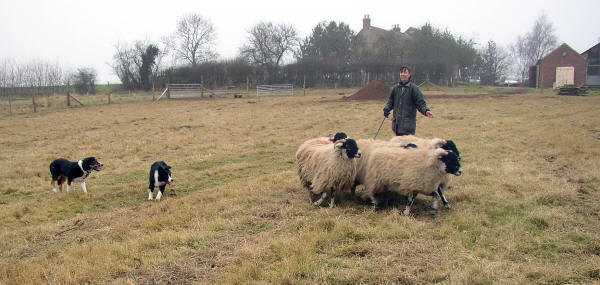
Animal behaviourists and veterinary and agricultural students attended on day release or residential courses to research and learn about the breed.
Members of the public could stay over weekends for educational purposes or in support of the work carried out at the centre on what was know as a 'working break' - B&B in exchange for helping with the residential dogs.

On the educational side there was a library / reference room with a growing collection of books, videos and DVD's about the breed and associated subjects.
Wi Fi was available and the library was equipped with a donated desktop computer with internet access for anyone who had not bought their laptop.
There was a room for presentations and talks for small groups of people and the area immediately in front of the house had been decked with a long ramp running up the side of the house from the car park so wheelchair access to the ground floor was possible.
The front garden was big enough for demonstrations of dog handling and set on three stepped levels so three different activities could take place at one time.
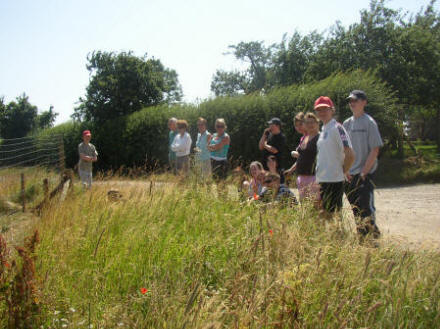
Demonstrations of various sorts were also given in the yards and fields and a variety of talks, seminars and workshops took place from time to time.
School groups and corporate groups came for half day or day visits to handle dogs and see demonstrations of herding and other disciplines.
One lady who came to do health and safety assessments for school visits said it was one of the safest farm environments she had been on.
Our plan to open such a rescue centre had been formulated around 12 years earlier.
We had thought long and hard about how Border Collies should be accommodated in rescue care.
Our conclusion was that keeping dogs with no inherent problems in foster homes would be the best way of looking after them until a permanent home could be found. It was a more natural environment than traditional kenneling.
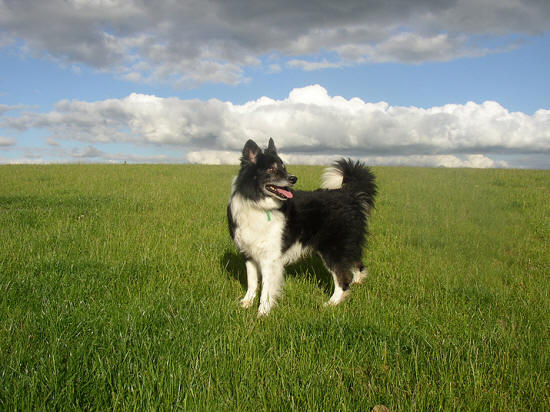
If they were destined to be working dogs then a foster home on a farm would provided them with what they needed while waiting for the best home to come up.
For those needing rehabilitation, assessment or intense training and those too aggressive or traumatised to be fostered we needed to set up a specialised centre where they could get what they needed.
The centre also helped dogs make the transition.
Dogs coming from farms that needed new homes as domestic companions were able to be gradually acclimatised to a domestic environment and those coming in from domestic homes who really should have been allowed to do the herding work they yearned after could be gradually acclimatised to being more independent and to a farming and working environment and lifestyle.

Expressions like 'stir crazy' - 'extreme frustration' - 'bouncing off the walls' - are commonly used by most rescue centres who are all trying to get their Border Collies out of their kennels as quickly as possible.
Some won't even let them in.
Our method has the flexibility of choice in where and how dogs were accommodated.
We could take whatever time was needed for each individual dog to work out its frustrations.
We could let each dog get its life back in order and discover what it was that made it happy and content.
We could do this without them suffering stress.
When we set up York we applied this approach and it worked well for many dogs that would otherwise have been put down because no-one had the time that was needed to lift them up.
We need to be able to do this again.
What made it work and how it will work in the future.

Our system of accommodating dogs had always been different from the conventional kenneling method.
Our methods are orientated for the convenience of the dogs rather than of the humans looking after them and we utilise the ability of dogs to help other dogs overcome trauma and learn new behaviour.
Like the York unit, our future centres will be small communities of dogs within a larger community rather than individual dogs, segregated into individual kennels.
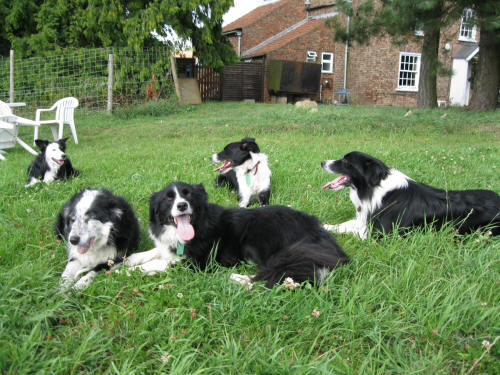
When they join a community the instinct to fit in inhibits many past problem behavioural patterns and allows them to be receptive to learning new patterns - but generally only for a short period while they take stock of their circumstances and look for ways to enhance their position or at least fit into the pack.
During that time we have to initiate them into the system
Border Collie Rescue has always had resident dogs that are trained to respond to certain signals and routines.
Some of these dogs are sheepdogs who's job it is to control stock during assessments and some are meet and greet dogs who can demonstrate obedience and other skills and are known to be safe - even enthusiastic - around strangers and children.
All the resident dogs get to know the routines of the humans around them and their reactions to the humans and the routines rub off on the incomers. We always teach our dogs to regard us as in charge, top dog, call it what you want - the dominant alpha leaders if you wish. We are in charge.
As a result the incoming dogs quickly learn to accept us in the same way and we, in our turn, support the resident dogs as group leaders to encourage incoming dogs accept them as the alpha's in our absence.
Routines encourage security which encourages good behaviour, positive interaction and frequently, expectations.
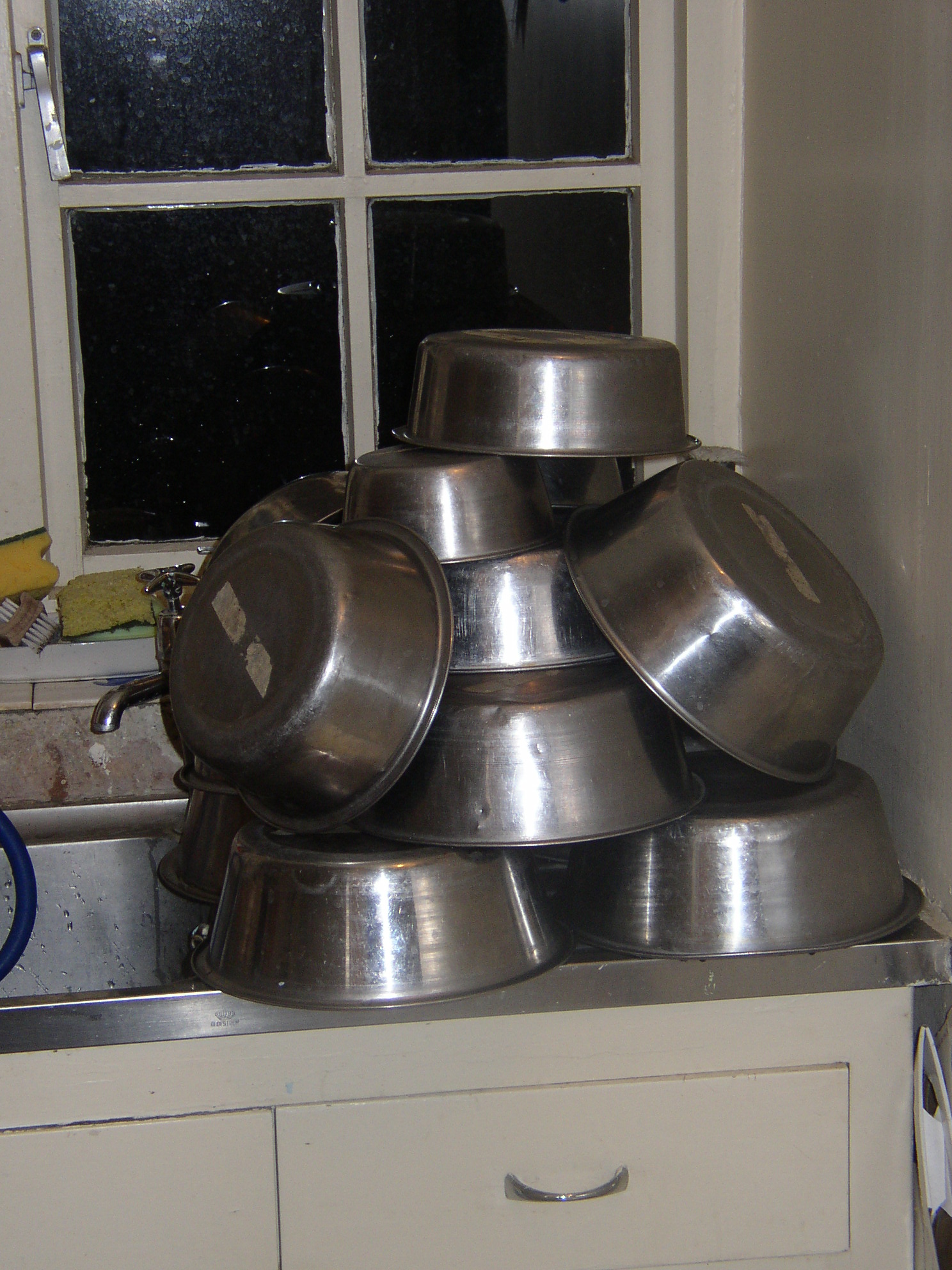
The resident dogs knew this was a signal for bedtime and to settle down quietly after being given the biscuit.
Other dogs in the group copied this behaviour and in turn passed it on to new dogs reinforcing the compliance of the incomers to the routines.
A biscuit in the evening signified bedtime.
At York the dogs were also trained to get into their bed at any time of day on a certain signal - we used a doorbell with a particular melody.
If we heard the beginnings of a barking sessions we pushed the button to tell them to be quiet and settle down. The resident dogs responded and the other dogs followed their example and in that way we stopped any barking or over excitement before it spread.
To prevent problems of competition between the groups of dogs we made sure that the resident dogs all integrate socially together so they all knew each other and respected each other.
Once started the whole system rolls along with it's own momentum. Dogs leave the groups to be rehomed and other dogs join.
The remaining dogs help train the newcomers and so it goes on.
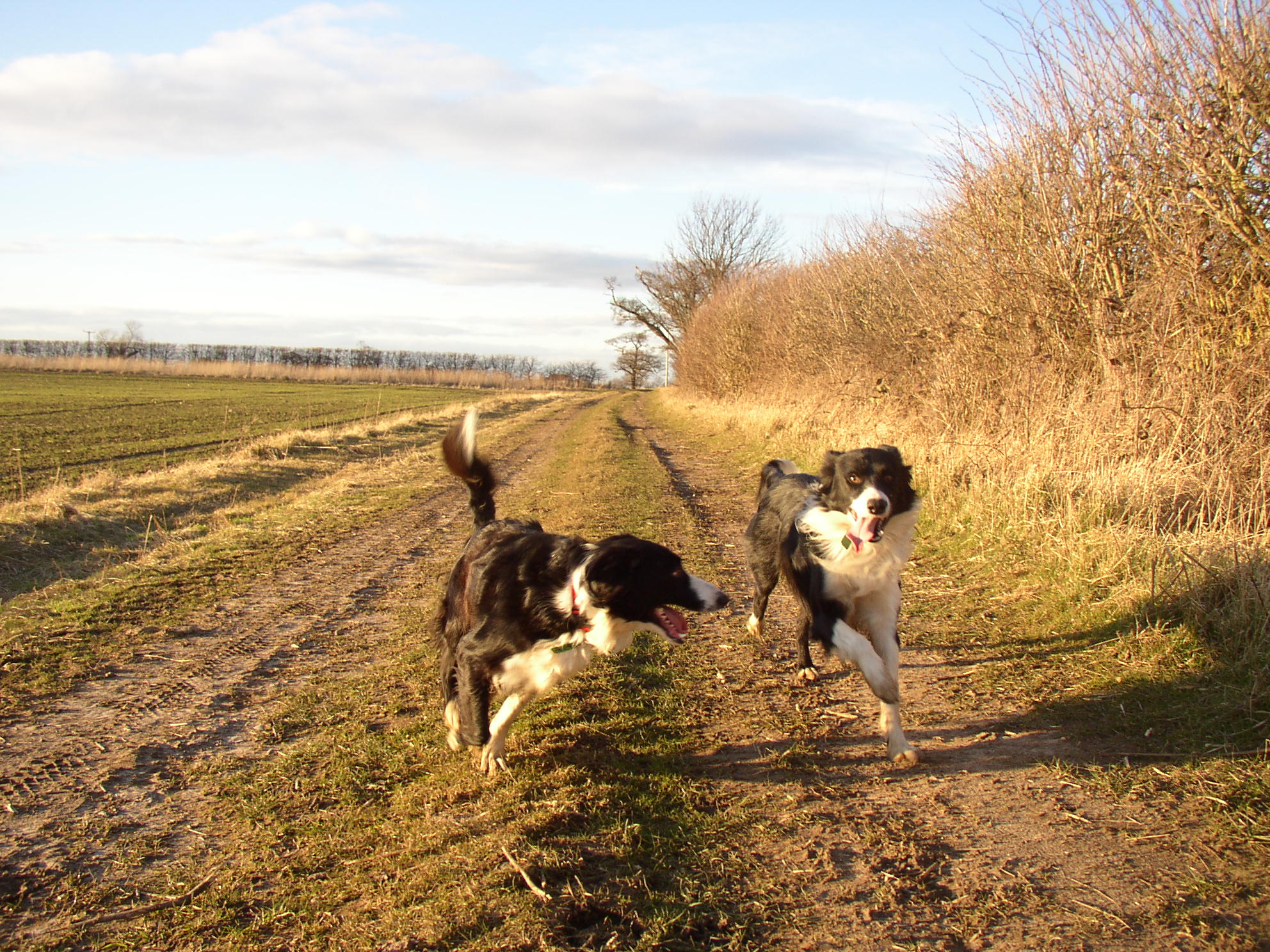
The trick is to cause this to happen rather than simply allow it to happen. It has to be guided so the new dogs learn positive behaviour rather than picking up bad habits.
Dogs that come in because they are aggressive to other dogs can be isolated but remain on the periphery of the group, gradually becoming receptive to group behaviour.
Co-operation rather than competition.
Fear aggressive dogs who react badly to humans will learn from the socialised dogs that humans are not to be feared (or bitten).
All of this creates a quiet and more stable environment for dogs to settle into.
It enables them to be receptive to further training and, best of all, it allows dogs with issues to settle in quickly and rehabilitate more rapidly because most of the negative energy associated with dogs in kennels has been taken away.
Once we are sure of their recall we are able to give them more freedom to run. We can let them off lead because they want to follow wherever we lead them and we know they will respond and come back to us when called.
They enjoy life with the other dogs in their group and become more tolerant of new dogs they meet. It's an eye opener!
We know how this works having used the system over many years and it works best in canine communities.
These are the sort of units we want to set up. Not big centres with scores of dogs. Small units with up to a couple of dozen.
We would happily continue to use foster homes and our capacity would be increased.
Ambition! Into the future?
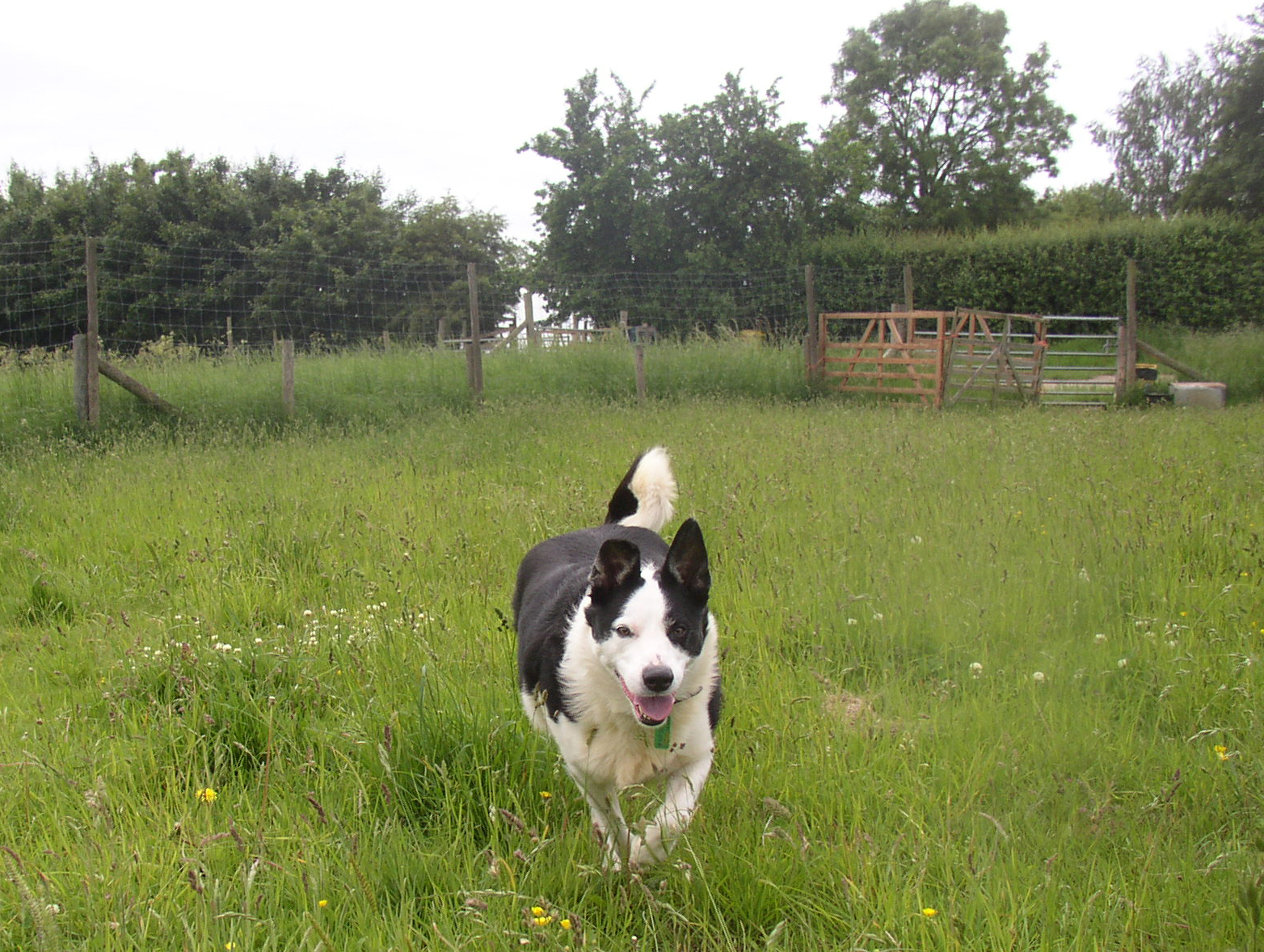
We are primarily a dog rescue charity but we also help a lot of people.
With a number of centres in different locations it will be more convenient for people to attend and use the facilities.
We can help more college and university students. Future behaviourists, vets, veterinary nurses and agricultural students.
We can help more people understand more about Border Collies - like we have done in the past and like we still do now, but on a greater scale.
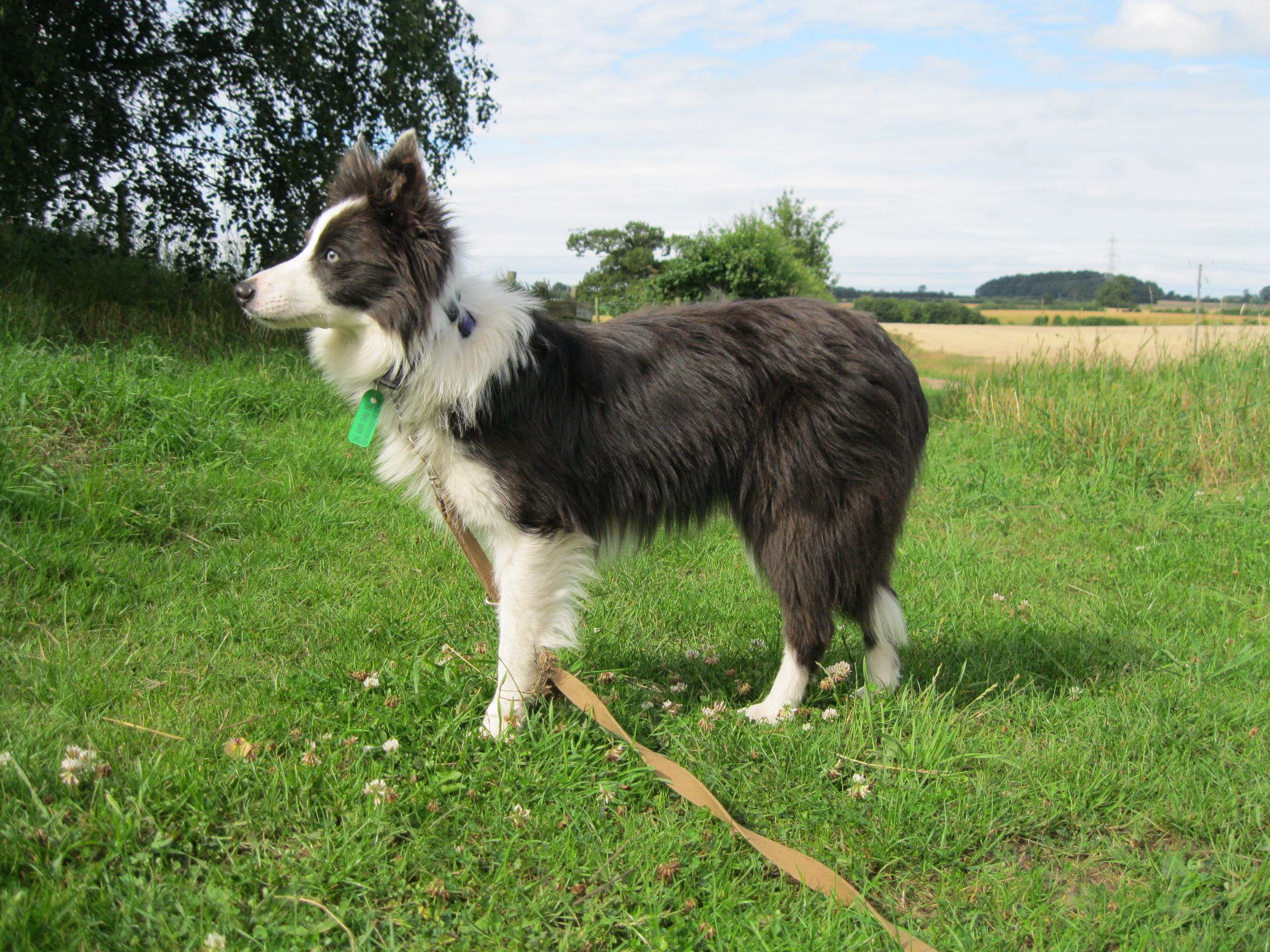
We can still assess sheepdogs and dogs for other work and disciplines but providing this service for others is more difficult and we can't help as many other people with assessments as we used to.
We can only offer offer advice through our advice line and websites and can't give practical demonstrations in the way we did at York.
There is much more needed than simply taking in and re-homing dogs.
That is part of what must be done to deal with existing problems but we have always wanted to prevent them in the first place and this can only be effective if we have the facilities to educate and demonstrate.
If we can raise up to £300K a sum corresponding to what we raise will be made available.
In a sense we are halfway there.
A small holding of 5 to 10 acres of grazing land, a house for accommodation and some outbuildings and barns to develop into what we need does not seem out of reach.
This is not an impossible aim - we can put in the work but that's not enough.
We need the funds.
Can you help?
Can you make a donation to our rescue centre fund?
Can you leave us a legacy towards setting up and running these centres?
Please have a look at donation options by clicking on the "Back to Funding our work" button in the left menu.
Then please get in touch for more details on how to go about making your donation specific to this aspect of our work.
Border Collie Rescue - 07707 485813 - 2pm to 5pm Tuesdays to Thursdays - or - email us here.
If you are interested in adopting a Border Collie from us,
please do not write to us or email us - we want to speak to you before we start the process.
Please phone us during office hours. Details here.
Calls to our office and mobile will only be answered during our office hours

